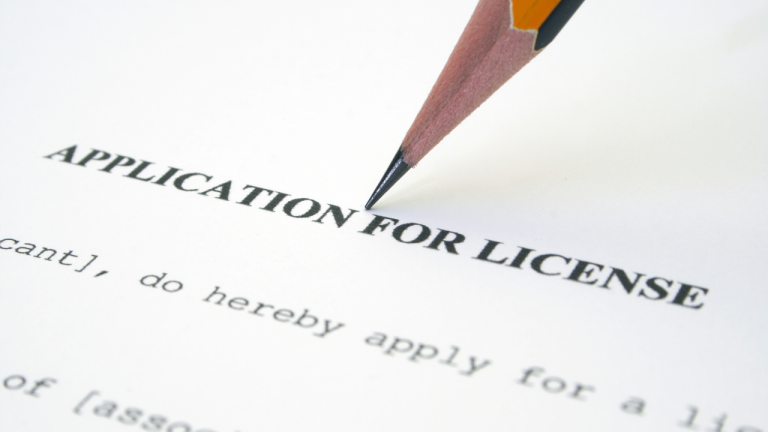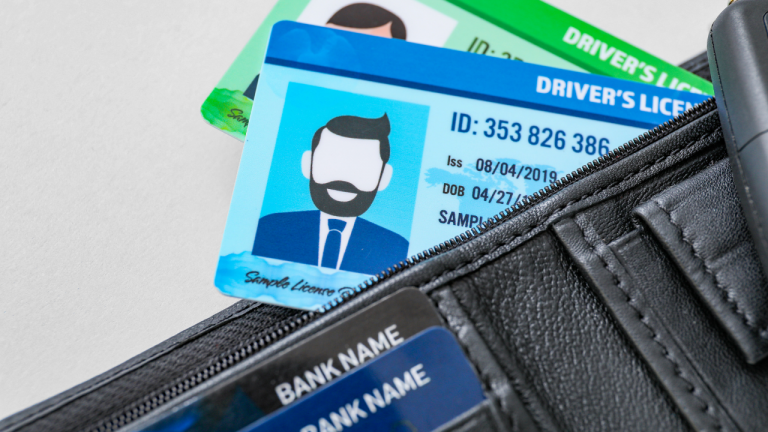So you want to start racing motorcycles? That’s great! Motorcycle racing is a thrilling and adrenaline-pumping sport that can give you a fantastic rush. However, to race motorcycles legally, you need to have a valid racing license. This article will walk you through obtaining a motorcycle racing license. We will cover everything from the basics of licensing requirements to the specific steps you need to take to receive your license. Let’s get started!
What is a motorcycle racing license, and what are its requirements?
Riders must first obtain a racing license from a sanctioned racing organization to compete in motorcycle racing events. There are typically three levels of racing licenses, each with its requirements. The first level is usually the novice license, intended for beginner riders. Riders must typically complete a training course and pass a written exam to obtain a novice license. The second level is the amateur or clubman license, which requires riders to have more experience and skills. Riders must usually participate in several races and earn points towards their racing ranking to get this license. The third level is the professional license, only awarded to riders with exceptional skill and experience. Experienced riders typically have extensive racing experience and may be required to earn multiple championship titles. To obtain a professional racing license, riders must usually meet all of the lower levels of licensure requirements and pass an additional skills test.
How can you get started in motorcycle racing?
If you’re interested in getting started in motorcycle racing, there are a few things you’ll need to do. First, you’ll need to get a motorcycle that meets the requirements for the class you want to race in. You can usually find these requirements on the website of the racing organization you’re interested in competing in. Once you’ve got your bike, you’ll need to make sure it’s properly tuned and ready to race. It usually involves taking it to a qualified mechanic and ensuring everything is in good working order. Finally, you’ll need to practice before you hit the racetrack. Many race tracks offer open practice days where anyone can come and ride around the track. It is a great way to get some experience and learn the lay of the land before your first race day.

What kind of training is required to obtain a motorcycle racing license?
Motorcycle racing is a popular sport that attracts riders of all ages and experience levels. However, riders must obtain a motorcycle racing license before hitting the track. Getting a license varies from country to country but typically involves completing several training sessions and passing a written exam. For example, in the United States, riders must complete a beginner, intermediate, and advanced training course before taking the written exam. Once licensed, riders are then eligible to compete in amateur and professional races. While obtaining a motorcycle racing license may seem daunting, the process is relatively straightforward and requires dedication and perseverance.
What are the costs associated with obtaining a motorcycle racing license?
Obtaining a motorcycle racing license can be a costly endeavor. The cost of the license itself is typically around $500, and this does not include the cost of taking the required safety course or purchasing the necessary equipment. In addition, most racing organizations need riders to have insurance, which can add expense. However, many riders find that the benefits of racing outweigh the costs. Racing provides an adrenaline-filled Rush that is unlike any other feeling, and it can be a great way to meet like-minded people. For those serious about racing, the costs associated with obtaining a license are simply a part of doing business.
How can you prepare for your first race competition?
Suppose you’re thinking about signing up for your first race. Congratulations! Taking on a running challenge is a great way to get fit and have fun. But if you’re new to racing, it’s essential to prepare before race day. The first step is to make sure you have the right gear. You’ll need a good pair of running shoes, comfortable clothing, and a water bottle. It’s also important to know the course route and start line to prepare for race day. The next step is to start training. Start by gradually increasing your mileage and mixing your workouts with speed work and hill repeats. And finally, don’t forget to rest! Ensure you’re getting enough sleep and taking breaks when you need them. You’ll be ready to take on your first race with confidence by following these simple steps.
What should you do if you experience an accident while racing?
If you’re involved in a racing accident, you should first check yourself for injuries. If you’re hurt, get medical attention immediately. Even if you don’t think you’re injured, it’s essential to see a doctor as soon as possible; some injuries, such as concussions, may not be immediately apparent. Once you’ve taken care of your health, the next step is to contact your insurance company and file a claim. Be sure to keep all documentation related to the accident, including any photos or videos you may have taken. It will help your insurance company process your claim quickly and efficiently. Finally, if you need to replace your car, start shopping around for a new one. Auto accidents are never fun, but you can minimize the hassle and get back on the road as soon as possible by following these steps.

FAQs about Motorcycle Racing License
So you want to get a motorcycle racing license? Here are some of the most frequently asked questions about the process.
How old do I have to be?
You must be at least 18 years old to apply for a motorcycle racing license in most cases. However, some racing organizations may have different age requirements, so be sure to check with the organization you plan on racing with.
Do I need a unique motorcycle?
No, you don’t need a unique motorcycle to race. Any street-legal bike that meets the safety requirements of the racing organization you plan on competing with will suffice.
Do I need any experience?
Some racing organizations may require that you have previous racing experience before applying for a license, while others may not have any such requirement. Again, it depends on the organization you plan on racing with.
How do I obtain an AMA Pro or National License?
To obtain an AMA Pro or National License, you must first complete an application form, submit it to the AMA, and pay the required fee. Once your application has been processed, you will be contacted by the AMA and instructed to schedule an appointment for a skills test. The skills test consists of a written exam and a riding proficiency test and must be taken at an approved testing site. Once you have completed the skills test, you will be issued an AMA Pro or National License. You can apply online at www.americanmotorcyclist.com/racing/sanctioned-events/apply-for-a-license.
How much does it cost to enter a race?
The cost of entering a race can vary depending on the type of race and the distance. For example, a 5K road race may cost $25 to join, while an ultramarathon can cost $100 or more. The cost also increases if the race is part of a more significant event, like a marathon or triathlon. In addition, many races offer discounts for early registration, so it’s often cheaper to sign up several months in advance. Ultimately, the best way to determine the cost of a particular race is to visit the race’s website or contact the race organizer directly.
What type of bike do I need to race?
There are many different types of bikes available on the market, and it cannot be easy to choose the right one for racing. One crucial factor to consider is the terrain you’ll be racing on. If you’ll be mostly racing on paved roads, then a road bike is good. Road bikes are designed for speed and efficiency, and they typically have thinner tires than other types of bikes. However, if you’ll be doing a lot of off-road racing, then a mountain bike is a better choice. Mountain bikes are built to withstand the rigors of off-road riding, and they typically have wider tires than road bikes. Another factor to consider is the weight of the bike. Racing bikes are generally lighter than other bikes, making them easier to pedal quickly. If you’re not sure what type of bike is right for you, talk to a local bicycle shop. They should be able to help you find the perfect bike for your racing needs.
Can I get sponsor logos on my bike and gear?
You might be surprised to learn that you can get sponsor logos on your bike and gear. Many professional cyclists have several sponsors that help cover the costs of their equipment and travel expenses. If you’re interested in getting sponsor logos on your bike and gear, there are a few things you need to do. First, you’ll need to find sponsors willing to support you. You can do this by contacting companies that make products that you use or by reaching out to businesses located in your area. Once you’ve found a few potential sponsors, you’ll need to create a proposal outlining your goals and explaining how their sponsorship would benefit them. If your proposal is successful, you’ll be able to get their logo placed on your bike and gear. Sponsorship can be a great way to offset cycling costs, so if you’re keen on getting started, don’t hesitate to reach out to potential sponsors.






